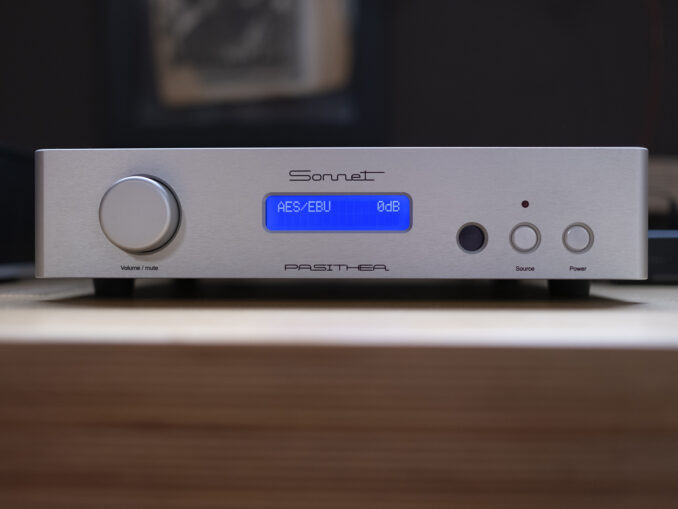
In Part One of my two-part Sonnet Pasithea review, I’m going to talk about how it performs as a DAC. Part Two will see it paired with the Kratos Mono Amplifiers and Hermes Streamer for a complete Sonnet system review.
Compared to the Sonnet Morpeus DAC I favorably reviewed (link) back in September of 2021, the Pasithea DAC has twice as many proprietary DAC modules and improves on most aspects of measured performance. According to the company, the Pasithea offers improved linearity, lower distortion, and a lower noise floor, 10dB lower than the Morpheus. It’s easy to assume all kinds of things when attempting to correlate measured performance with sound quality, but the fact of the matter is there’s no substitute for listening if we’re interested in how something sounds and the more relevant point, how that sound makes us respond to music.
Imagine a website that offers a complete set of measurements along with detailed interpretations of every instrument in a symphony orchestra. Do you believe that having read everything on this site you’d have a better idea of how an oboe sounds, without ever having heard one, compared to someone who’s actually listened to one? Or someone who plays one? Those are not questions. When people tell you all about how a piece of hifi kit sounds even though they’ve never heard it, you know they’re blowing wind.
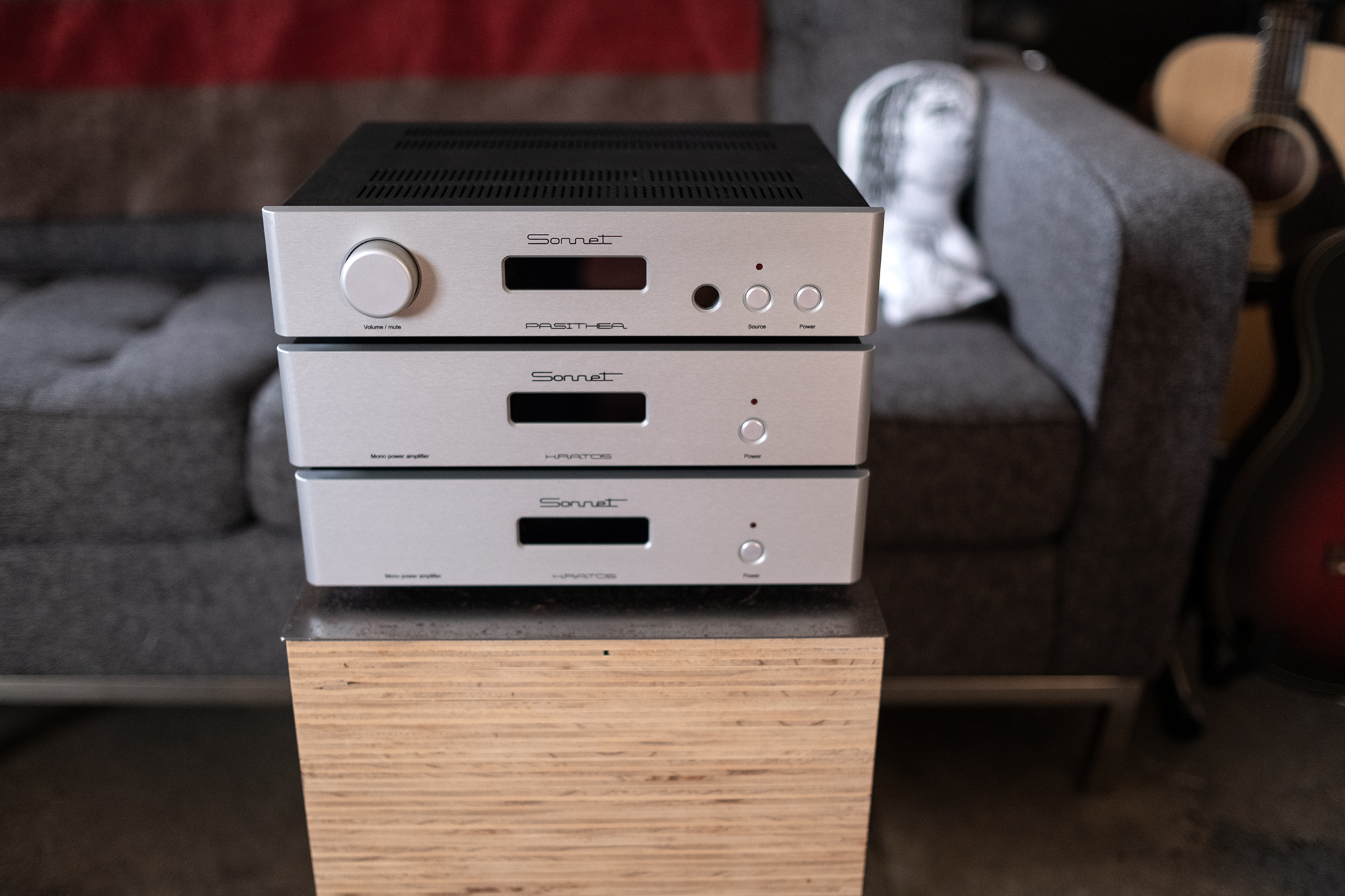
As I explained in my review of the Sonnet Morpheus/Hermes, Sonnet was founded by Cees Ruijtenberg who I assume most of you know from his days at Metrum Acoustics. I reviewed the Metrum Hex DAC in 2013 followed by reviews of Metrum’s Pavane and Musette DACs in 2015. As was the case at Metrum, Sonnet’s DACs are non-oversampling resistor ladder designs built around Cees’ Sonnet Digital Audio (SDA) R2R DAC modules. The Pasithea uses eight of the company’s SDA-3 R2R DAC modules, which are an upgraded version of the SDA-2 modules found in the Sonnet Morpeus. In a very general sense, it is my sense that when we add more R2R DACs, modules or resistors as is the case in the totaldacs, one thing we get is greater resolution and my listening impressions bore this out.

You’ll find the usual compliment of inputs around back, joined by the not-so-typical I2S over RJ45. I’ll be trying out this input in Part Two of this review with the similarly I2S endowed Sonnet Hermes Streamer (review). Single ended RCAs and balanced XLRs account for the Pasithea’s outputs.

Listening to the Sonnet DAC in my system—with the DeVore O/96 driven by the Leben CS600—and using the review sample Auralic ARIES G1.1 Wireless Streaming Transporter (more info) to feed the Pasithea via a length of AudioQuest Diamond AES cable, I was treated with a very compelling musical event for weeks (and weeks) on end. The Pasithea also saw playtime with the GoldenEar Triton One.R Towers (review) as well as with the impressive Silent Angel Munich M1T Streamer (review) and its strengths always shone through. The Auralic dug out more resolution and clarity as compared to the Silent Angel, something we should expect from a costlier component. But the Pasithea’s character—bell-like clarity, fine-grained detail, dynamic jump, and silky flow—were evident in each system context.
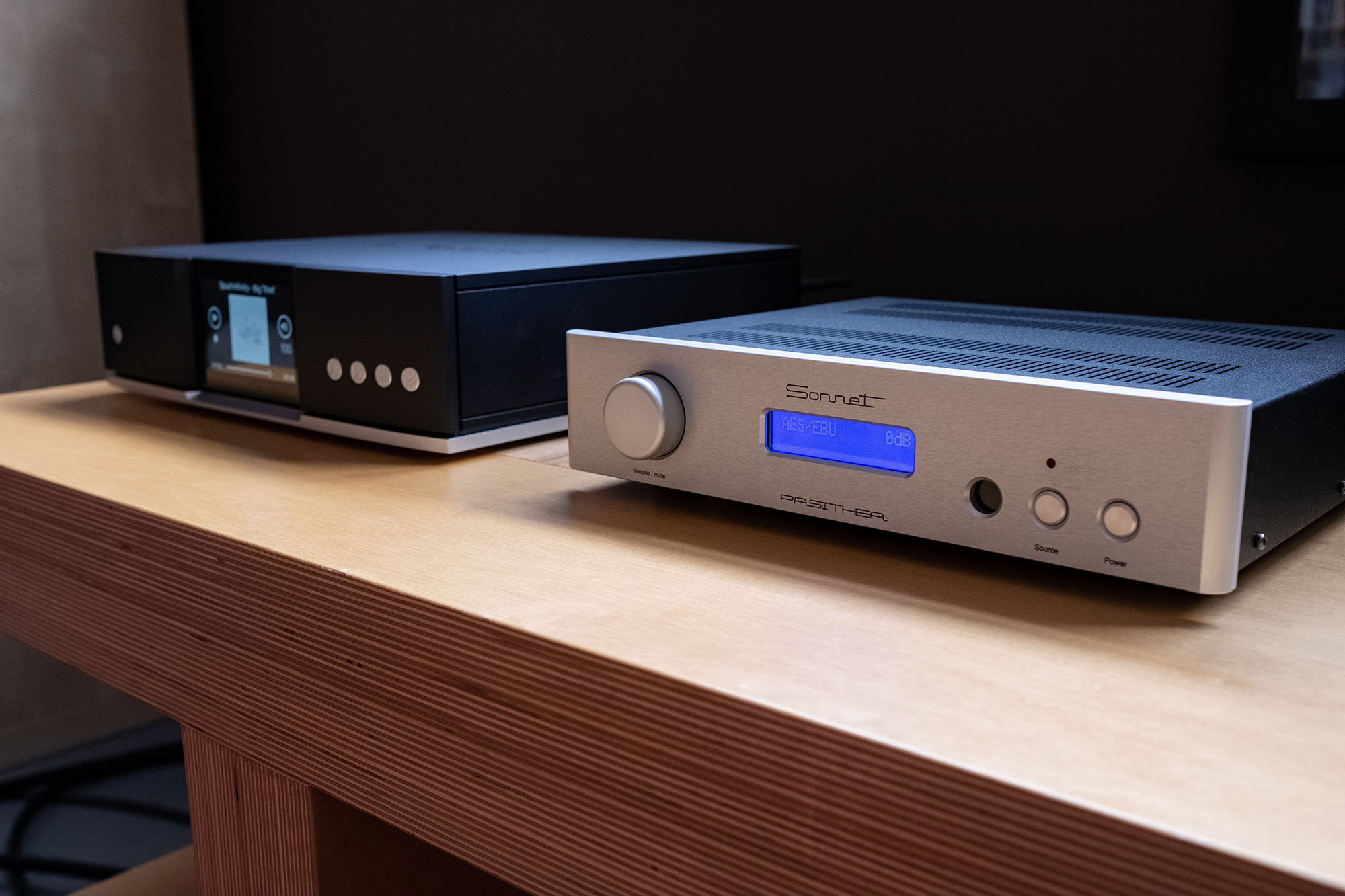
Too much time has passed since the Morpheus left and the Pasithea arrived for me to offer a meaningful and detailed play by play sonic comparison between the two. But in general terms, I can say that the Pasithea is one highly resolving DAC and my sense is it offers a finer-grained view of music as compared to the Morpheus. I say this with some amount of confidence because this aspect of the Pasithea’s performance is remarkable, a stand-out quality that shone a brighter light onto the finer details of every recording I played through it to a degree greater than I’m used to hearing.

I shared this thought in my review of Sonnet Morpheus: Resolution can be tricky when it comes to digital. Too much and the focus shifts from music to sound, and too little reduces engagement. With the Sonnet/Auralic combo, this resolution-to-engagement ratio was perfectly balanced. With the Pasithea converting digital to analog, I heard well into the recording down to fine grained details that make spatial location rock solid and as clearly defined as a sculpture. The Pasithea also offered dramatic dynamic jump, with sounds emerging from silence and exploding into the air like fireworks against the night sky coupled with a presentation that allowed for the subtlest nuance and inflection to come through with great clarity.
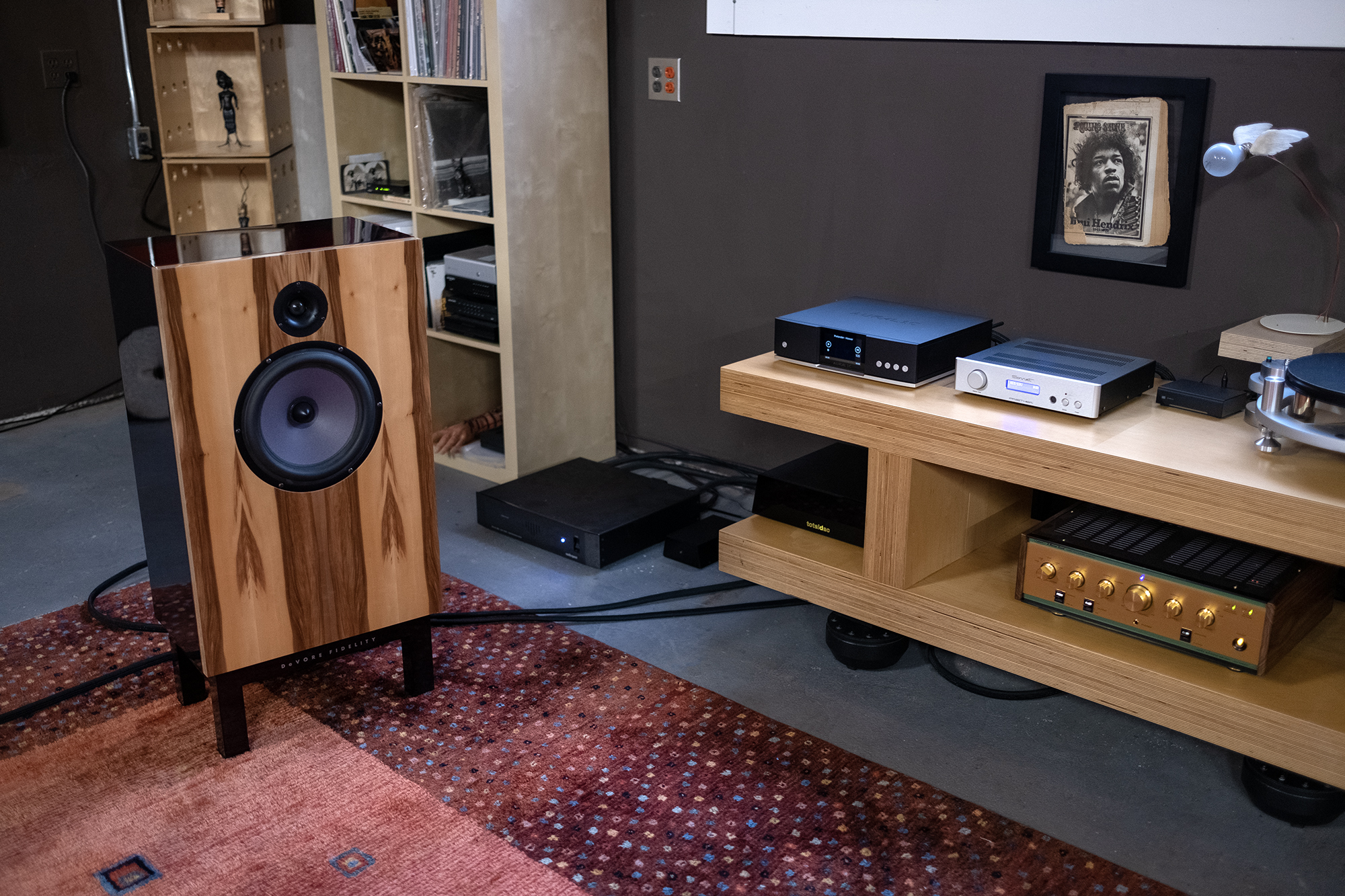
The Sonnet Pasithea is a king of clarity, sounding super-refined yet free from artificial edge or a threadbare lack of body. I will once again give the edge to the totaldac d1-tube DAC/Streamer for its plumper and larger sound image, but the totaldac is not as pure-sounding as the Pasithea. Purity meaning a lack of coloration or perceived extra bloom in and around the notes. Comparatively speaking, the Sonnet DAC made simple acoustic guitar and vocal music sound at once tighter and ever so slightly faster playing the same music as compared to the totaldac which brought more attention to a note’s bloom, decay, and rich timbre slowing down the perceived pace. In many ways these differences amount to personal preference but the Pasithea is clearly the more resolving DAC.
Julien Baker’s solo debut Sprained Ankle from 2015 is a current favorite and the Sonnet DAC did wonders with her voice and guitar, cutting out a clear sound image of Baker in Barn. This kind of presentation makes me want to close my eyes, which I did many times, to better drink in every last ounce of this simple, beautiful music. When reproduction fades and performance takes over, as it did with the Pasithea, I find myself torn between wanting to sing along and being perfectly silent so as not to interfere. This kind of captivating tension is a very clear indication that a hifi is doing its job to a very high level of quality. Or perhaps better to simply say this is what I want from my hifi—a complete connection to the music, making everything else fade away.
London-based artist Nuha Ruby Ra has released two singles from her upcoming Machine Like Me EP, due out next month. In the mean time, I’ve been basking in the furious punk funk of “Self Portraiture” and “My Voice” with volume-induced abandon. “My Voice” opens with a deep, bouncy bass groove joined by Ra’s layered vocals and electronic chirps and quirks rising and receding like waves. This is music that needs to played loud and the Pasithea grabbed hold of every ounce of bass throb and synth quiver, building a sea of sound with Ra’s voice rising above, tossing me around like a paper hat in a blizzard.
That being said, the Pasithea delivers this full-bodied, full range performance even at low listening levels where some DACs tend to lose their grip on bass response and low level details get lost in the sauce (noise floor). Over time, listening to music through the Pasithea brought me deeper into whatever music I wanted to hear where thoughts of its sonic strengths and traits were replaced by aspects of the musical performance. In so doing, the Sonnet DAC became a rather elusive review subject as the power and beauty of music overwhelmed my thoughts and attention.
Sam Gendel and Antonia Cytrynowicz’s Live A Little from May of last year is a scintillating jazz pop peach of a record. Cytrynowicz was 11 years old when this record was recorded, a fact that makes perfect sense and no sense at all, and she improvised her vocal lines while Gendel played along using a host of instruments. This music dances so freely there’s nearly zero sense of gravity, and the Sonnet DAC communicated its playfulness and unfettered delight with superb clarity and grace. During my first listen, and without knowing anything about this record, I thought the vocals were pitch-shifted, auto-tuned to sound like a younger soul was singing but it quickly became evident that I was listening to an old soul in a young body. The Pasithea is able to convey a very refined sense of scale, from the tiniest sound to the biggest boom, so it was easy to wrap my head around the youthful pitch of Cytrynowicz’s singing.
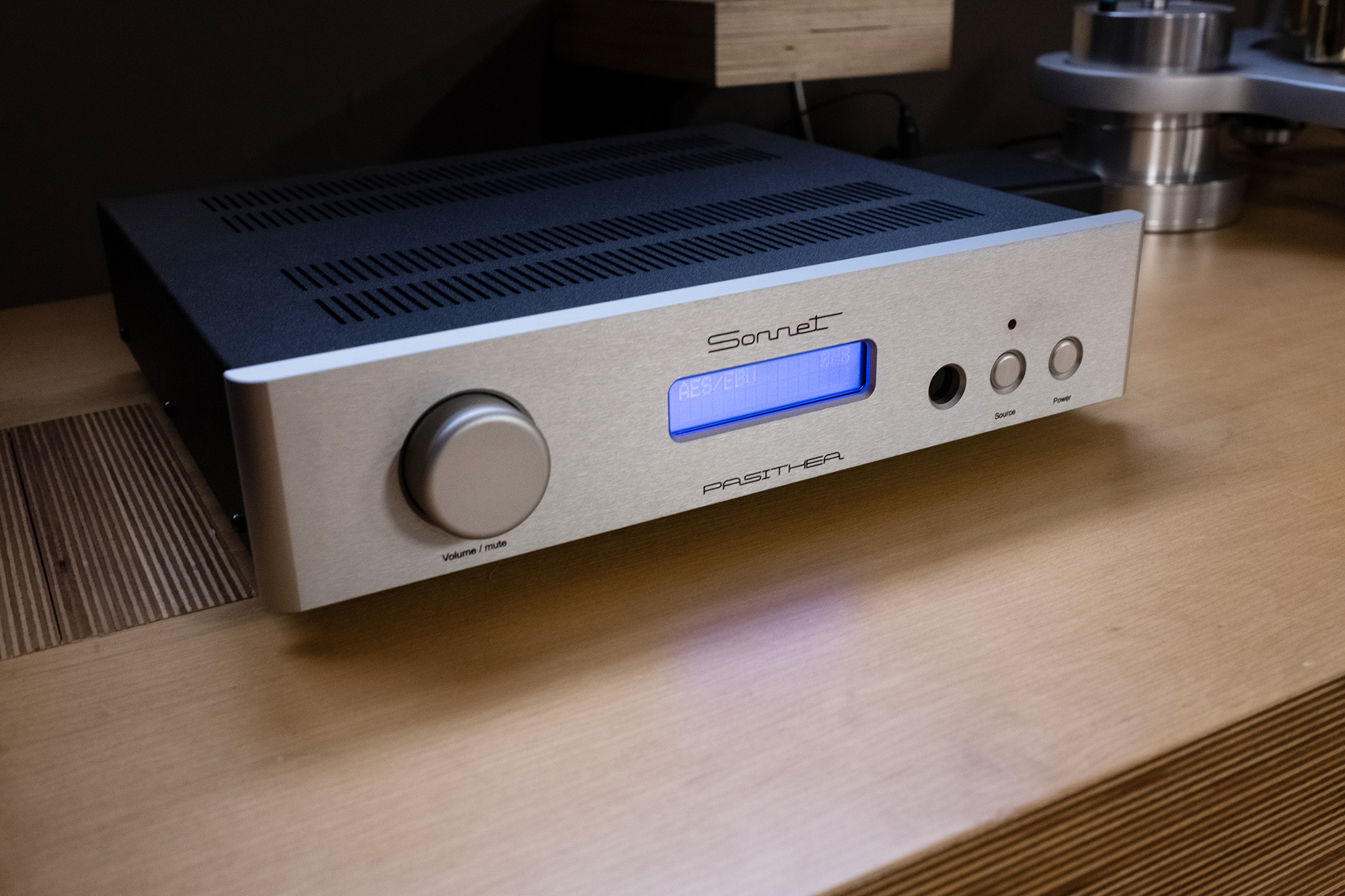
In terms of pure performance, I can find nothing to criticize in the Sonnet Pasithea and only things to praise. Its combined skills of silky smooth resolution, stunning clarity, and rock solid full range sound at any volume level make it a clear choice for anyone wanting to get the most from digital music. That the Pasithea delivers this level of performance for just under $5k is as remarkable as its way with music. Very highly recommended.

Sonnet Digital Audio Pasithea DAC
Price: $4995 | $5285 w/MQA Module
Company Website: Sonnet Audio
US Distributor Website: Art Audio Cable
Specifications
Balanced, Non oversampling DAC
Four SDA-3 DAC modules per channel, Eight total, in differential mode
Power supply: 30VA 110/115V AC 220/230V AC 60/50Hz. Power required max 16 Watts
Input: 1x optical, 1x coaxial and 1x AES/EBU, 1x I2S and 1x USB input.
Output: 1x stereo pair single ended 2 Volts RMS. In -10dB mode 0.66 Volts RMS
Output: 1x stereo pair XLR balanced 4 Volts RMS In -10dB mode 1.33 Volts RMS
Frequency Response: 44.1 kHz sampling 1Hz – 20 khz -1dB
Frequency Response: 192 kHz sampling 1Hz – 65 kHz – 3dB and 384kHz (USB)
Distortion: 0.001% THD
Channel separation 125dB
Noise Floor: -160 dB related to 4 Volt RMS
Output impedance: RCA 100 Ohm, XLR 16 Ohms, Physical -10dB setting 8 Ohms
Sampling rate: Optical 44.1 – 96 kHz
Sampling rate: Coax and AES/EBU: 44.1 -192 kHz
Sampling rate: USB 44.1 – 384kHz (Windows)
Aluminum six button remote control included.
Possible options: MQA module (standard not included)
